Continuing on from the prior post, we follow the Pichi Richi Railways’ Afghan Express as it heads out of Port Augusta and up into the Flinders Ranges through the Pichi Richi Pass.
If you haven’t taken a look at the earlier post Head full of steam: Pichi Richi Railway I suggest you take a look there before continuing with this post.
After leaving Port Augusta railway station I drove a few miles out of Port Augusta and onto the road to Quorn, stopping partway across the coastal plain at the rail bridge over Saltia Creek. Here I found some other train enthusiasts (and lots of annoying small flies) also waiting for the train.
First up, an important advisory announcement…
After what seemed like a long wait, the Afghan Express came into view as it climbed a low embankment and onto the bridge.
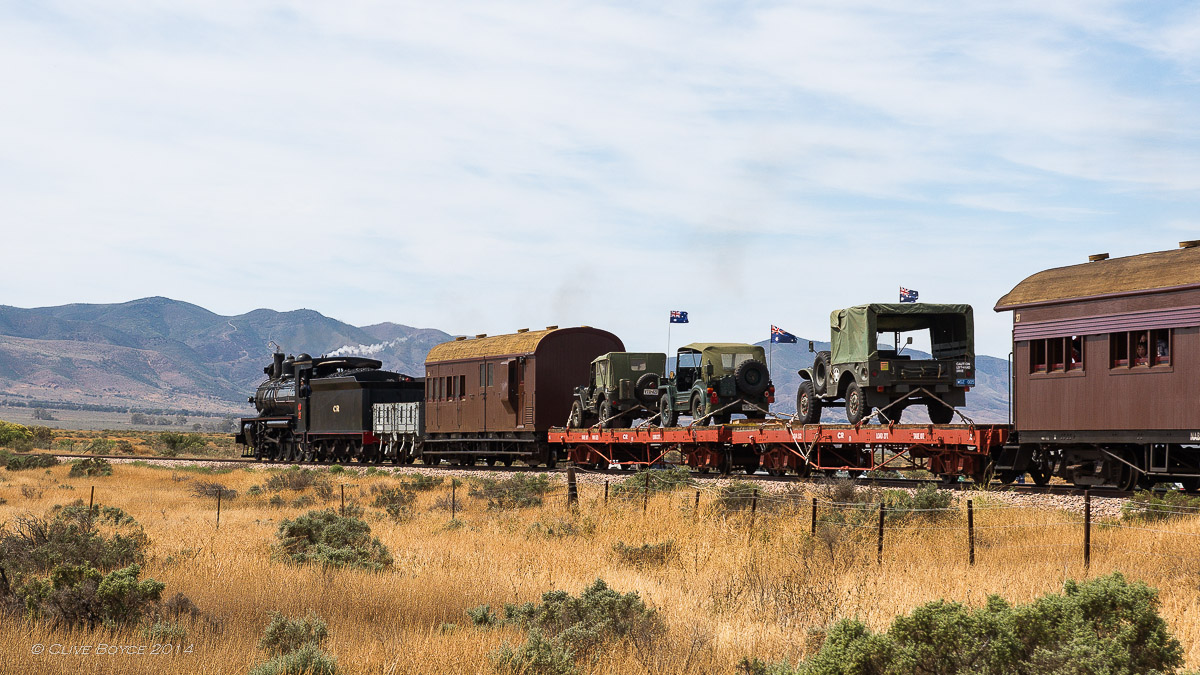
Heading towards the Flinders Ranges. While the photo may make the plains look nice and grassy, the ‘grass’ seen here is masses of dried out low stick-like plants that are far less appealing when observed close up. The area is semi-arid with an average yearly rainfall of 250mm (10 inches).
As the Afghan Express enters the foothills, the road and rail alignments separate for a couple of miles before again meeting at a level crossing at the abandoned settlement of Saltia.
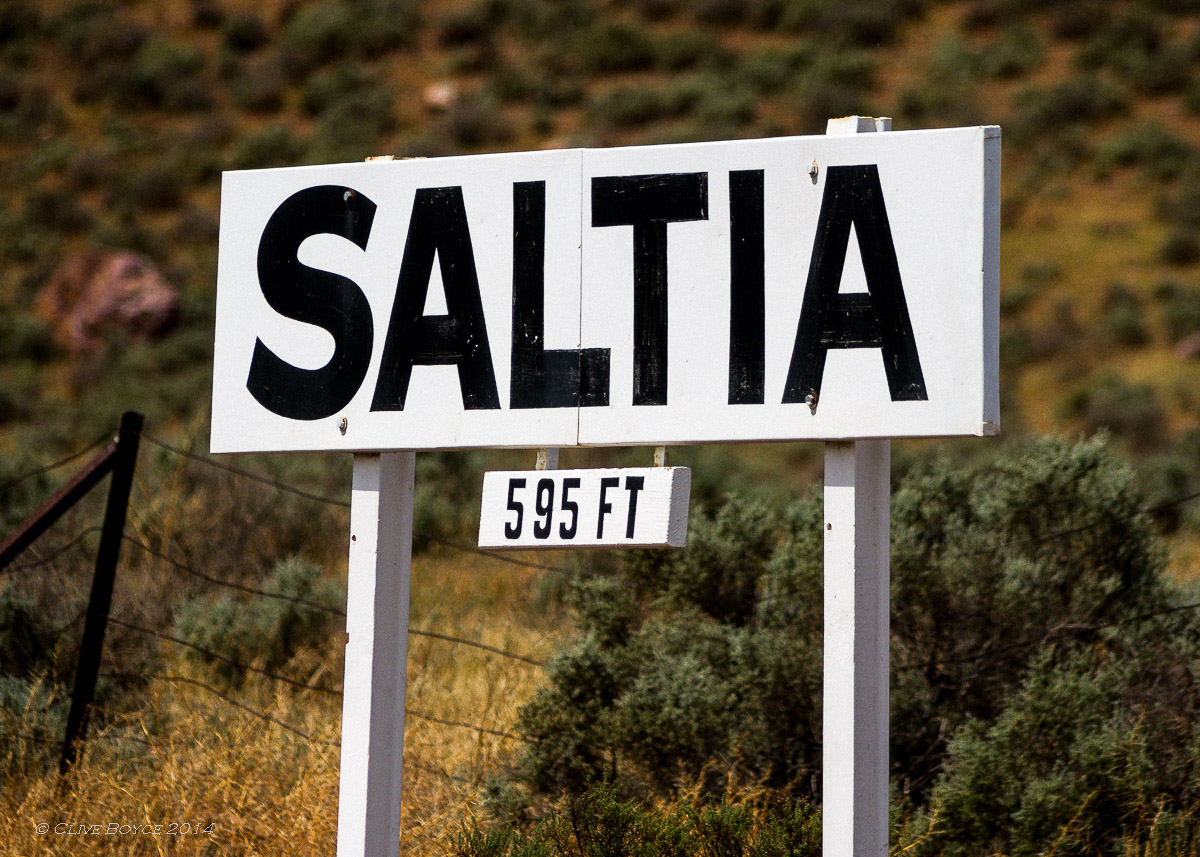
The platform sign is about all that is left marking the location of the former settlement of Saltia. Before the railway was built in 1878, transport of goods between Port Augusta and the areas east was by bullock wagons driven up and across the Pichi Richi Pass. In the hard hilly terrain, a bullock team could only travel around 10 kilometres (6 miles) a day and small settlements like Saltia were established along the pass at the over-nighting locations of the bullock teams. Once the railway went through, these small communities had no purpose and disappeared.
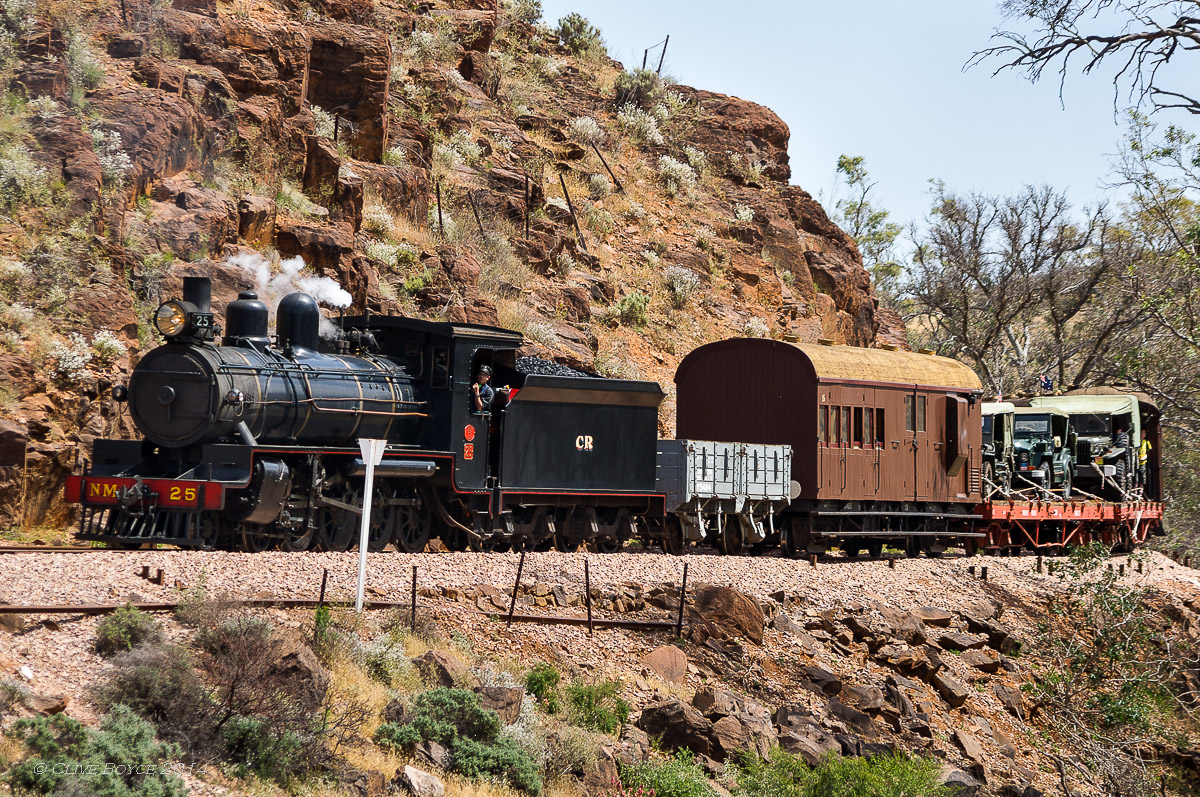
The western escarpment of the Flinders Ranges is quite rugged and offers few points for east-west passage. Invariably what passes there are follow the alignment of the creeks that flow down onto the plains. Here NM25 is working hard as it pulls its consist up the snaking turns cut into the gully sides of Saltia Creek. This is the original track alignment built in 1878.
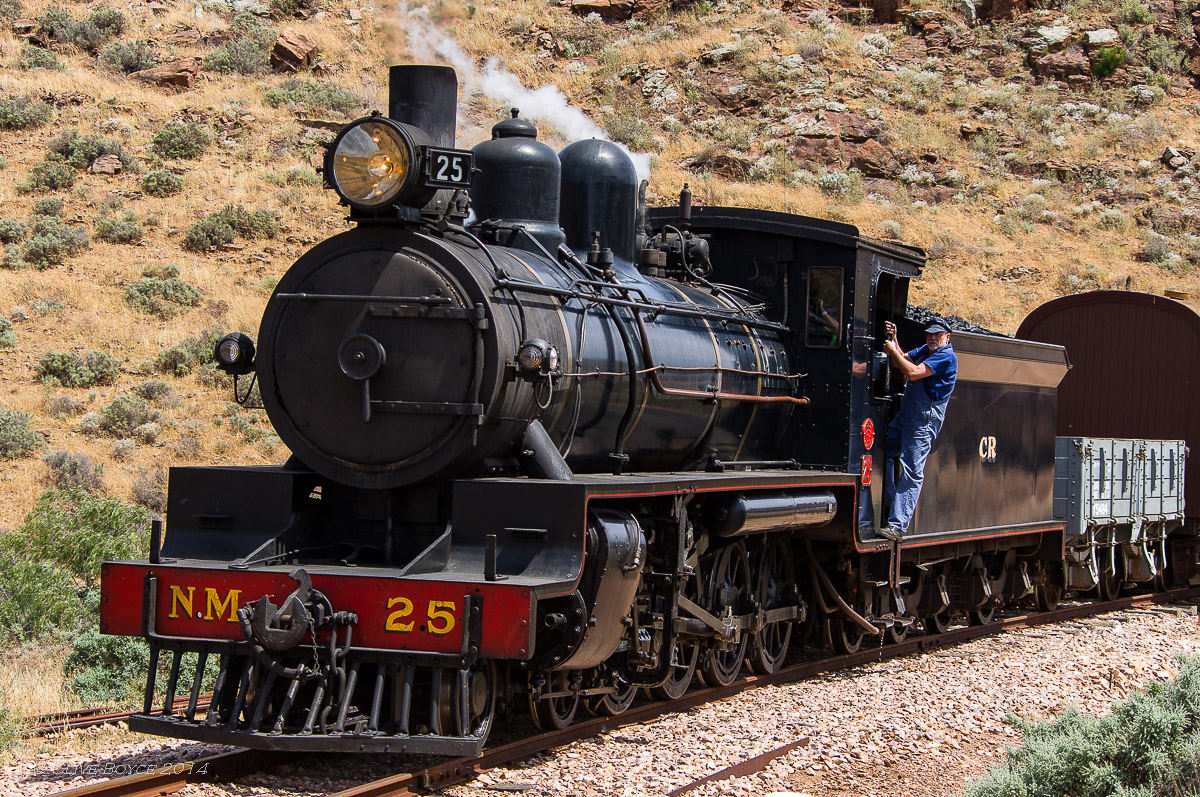
Pulling up before the level crossing at Saltia. The warning signals are manually operated by the train crew. Not an easy spot to restart – on a steep upward slope and with the train behind stretched out behind around a tight bend. Think of a hill start in a manual car with a heavy trailer on the back, and then add in the complications of doing the same with a steam locomotive. On the first attempt, after a bit of clunking and carry-on, the locomotive had just started forward when some idiot in a car drove straight through the level crossing (and to do so going around a line of cars already stopped). This forced the engine driver to halt the train, and then have to go through the whole re-start process again.
Having navigated the initial hard climb, the gully opens out onto some flatter land, giving the train some easier steaming.
Just before the highest point of the Pichi Richi pass, the Afghan Express arrives at Woolshed Flat where it meets another Pichi Richi Railways service that’s come up the eastern side of the pass from the township of Quorn.
We’ll take a look at what happens next in another post.
Camera Gear
Camera was a Pentax K-x and the lens in use were my walkabout lens, the Tamron 17-50mm F2.8 and a Pentax 55-300 F4-5.8.
To Learn More
The Pichi Richi Railway website is here. Lots of details on their rolling stock and service schedules are also there. In 2015 the double headed trains are listed for 6th June and 3rd October. I also see their quaint little ‘Coffee Pot’ loco is promised to return to service some time in 2015 after several years off-line awaiting significant repairs.
Port Augusta is around 3½ hours drive from Adelaide while Port Augusta to Quorn is about 30 minutes by car provided you don’t stop for train photos :-).
Port Augusta/Quorn is the southern gateway to the Flinders Ranges proper. The Flinders give a real taste of the outback while still being accessible by two wheel drive vehicles as far as Blinman. It starts to get a bit on the rough side after that. Tacking a Pichi Richi train experience onto a Flinders Ranges holiday would be a good combination. I don’t recommend a Flinders Ranges holiday in summer – some days might be fine but you could also get stuck with a full-on heat wave. Late March to October are the best travel times and that also broadly coincides with when the Pichi Richi Railway runs steam services. During the fire ban season, they will run heritage diesels rather than steam because of the fire risk associated with embers and ash emitted from steam locomotives.
From what I have seen from several visits up there, the Pichi Richi heritage train services have their minor hiccups along the way and can run moderately behind schedule. It you choose to ride one of the Pichi Richi trains, build some slack into your day’s scheduling and just go with the flow enjoying an authentic experience. The original Ghan rarely kept to a schedule either.
Related Posts
Too many other train posts to list easily so here’s the link to the Trains category where you can explore other posts at your leisure.


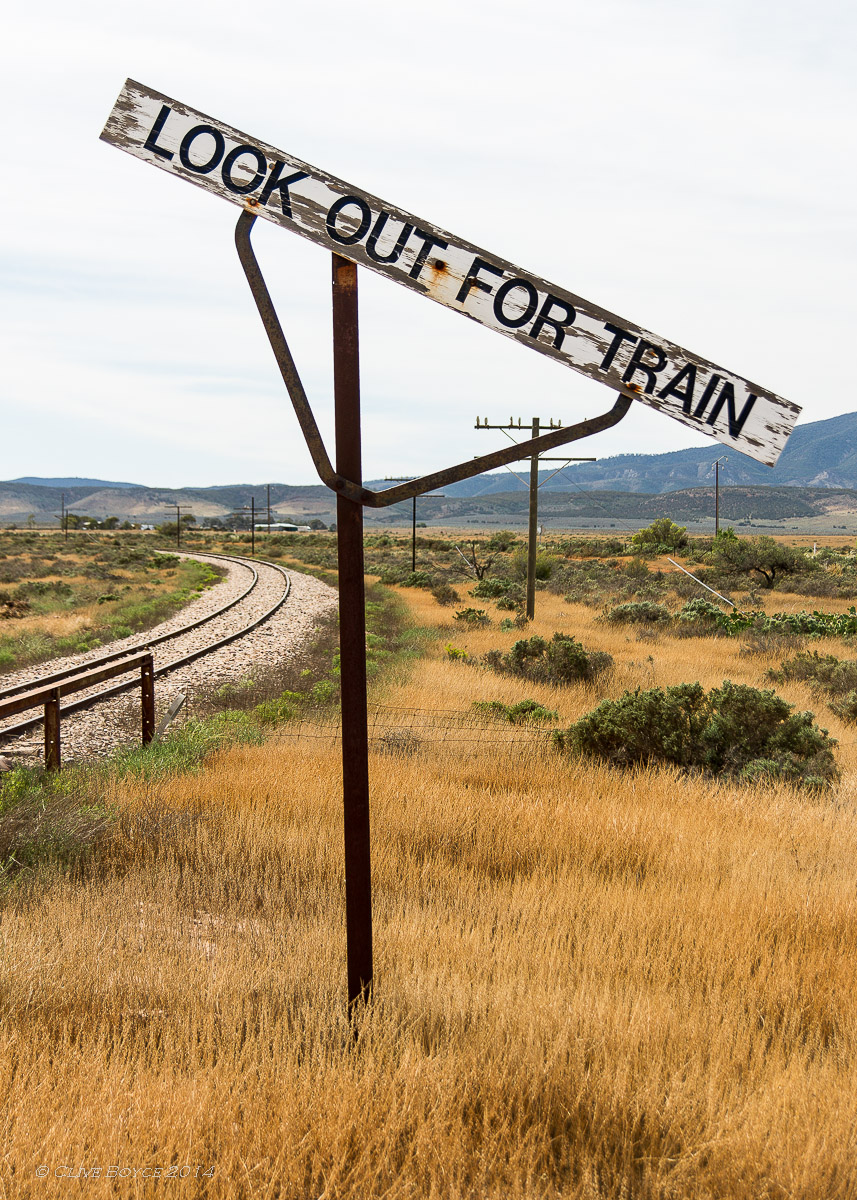
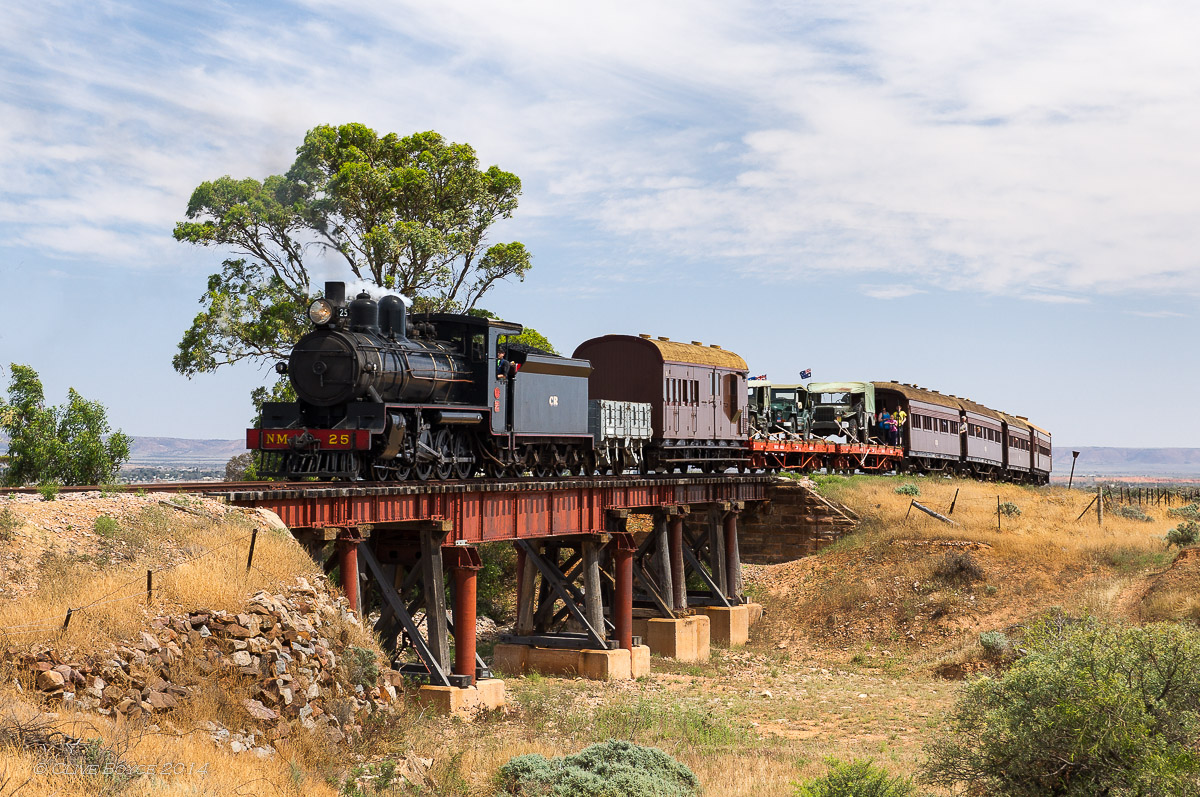
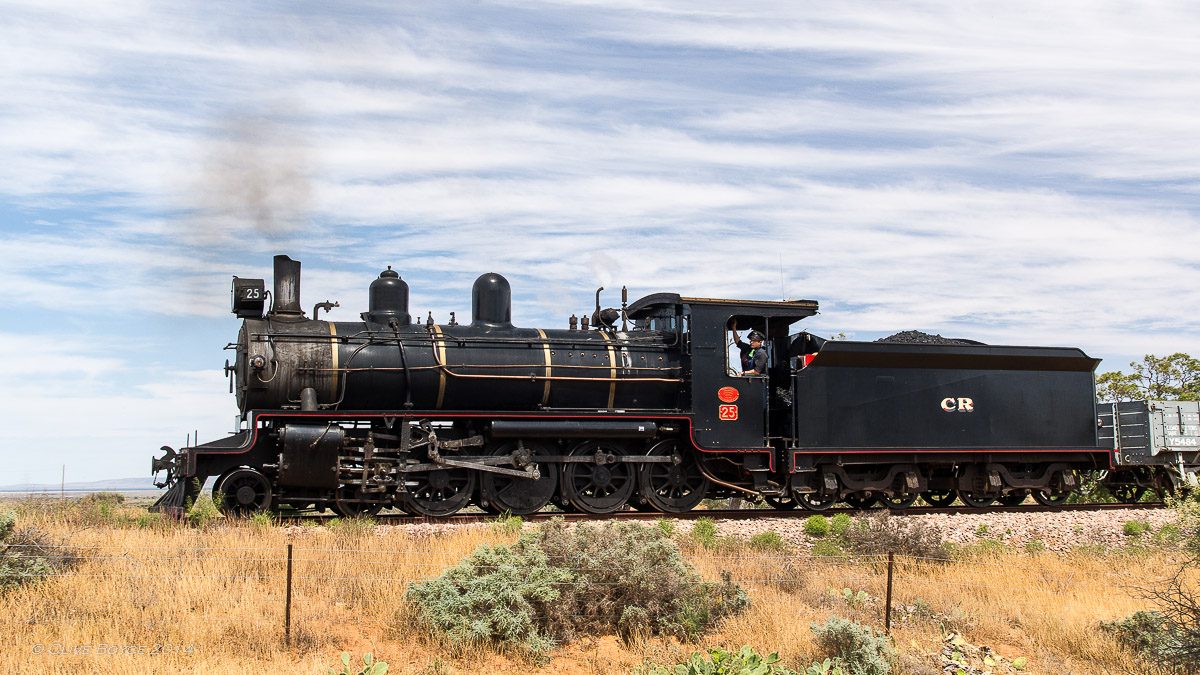
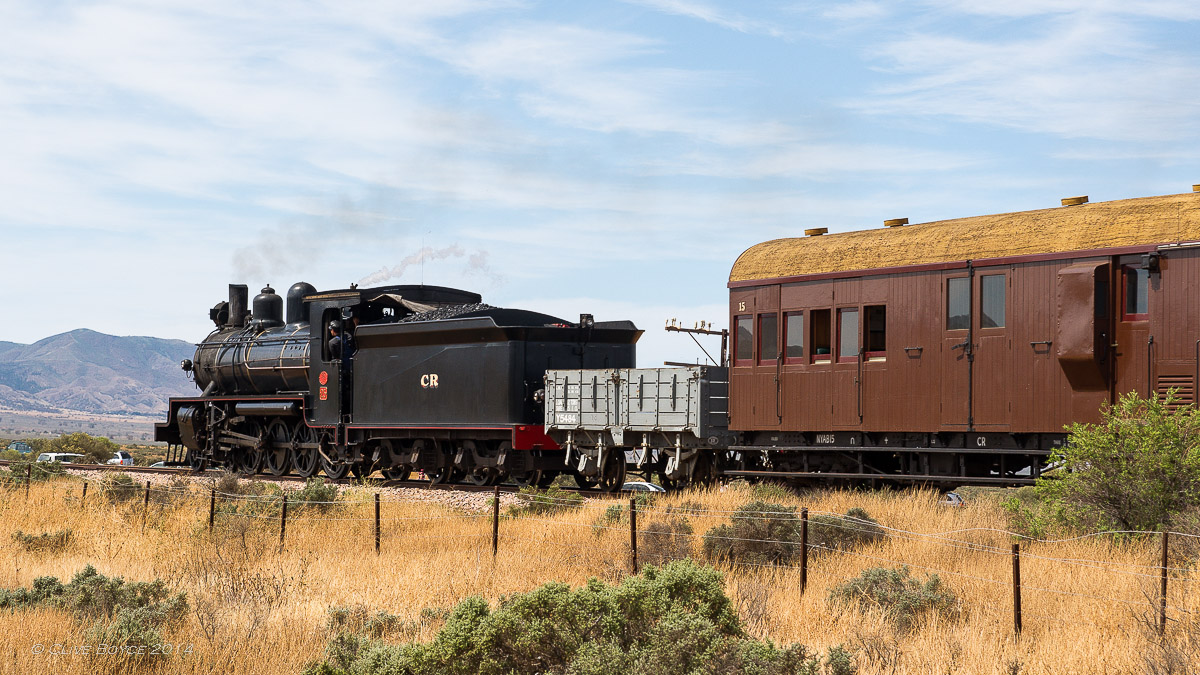
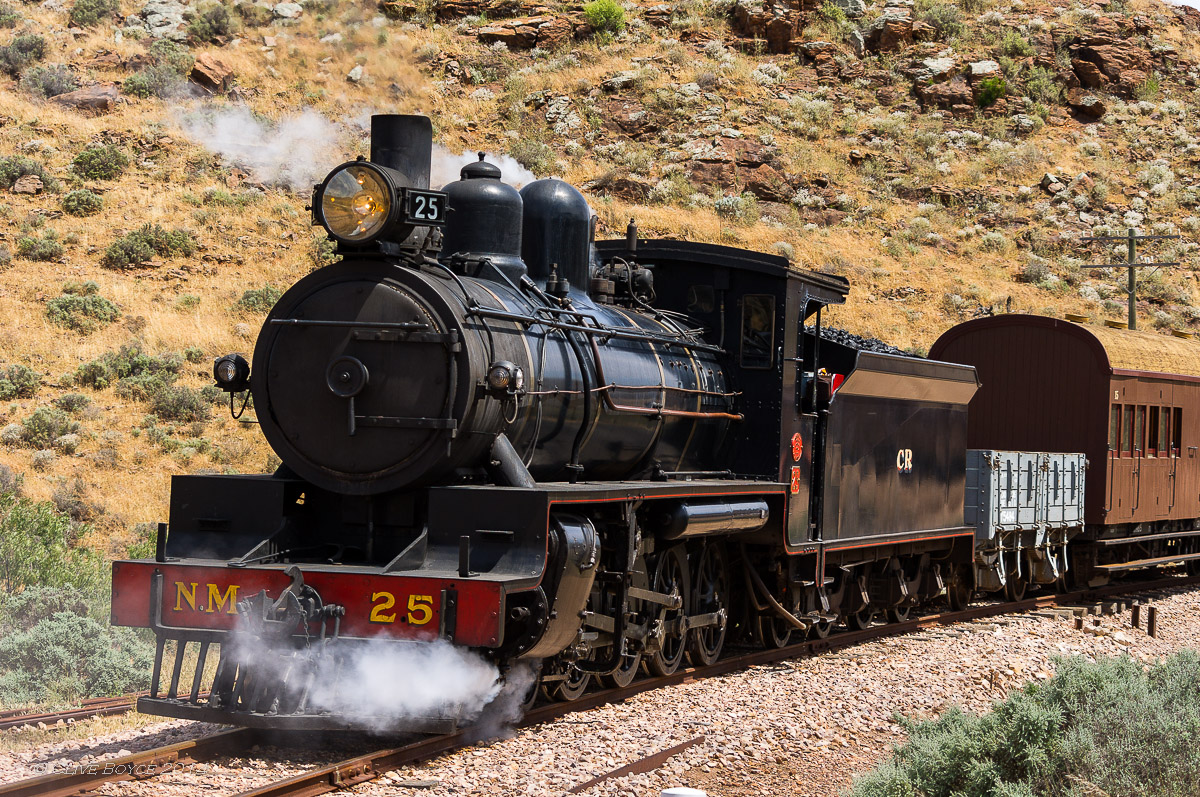
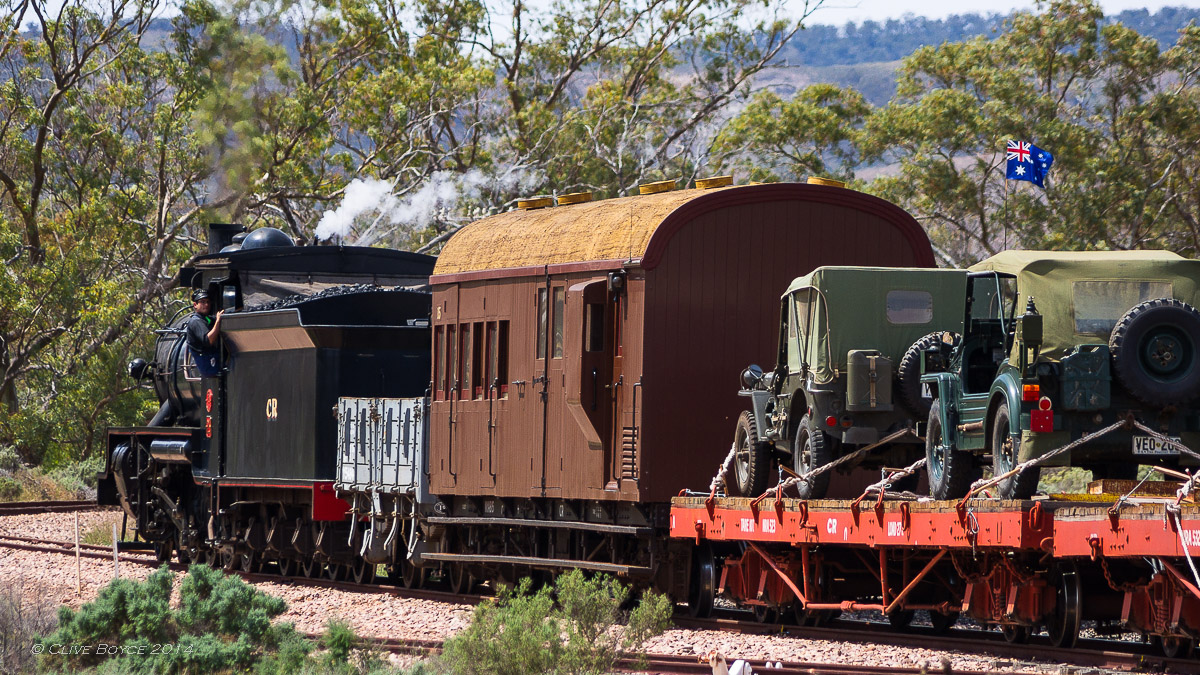
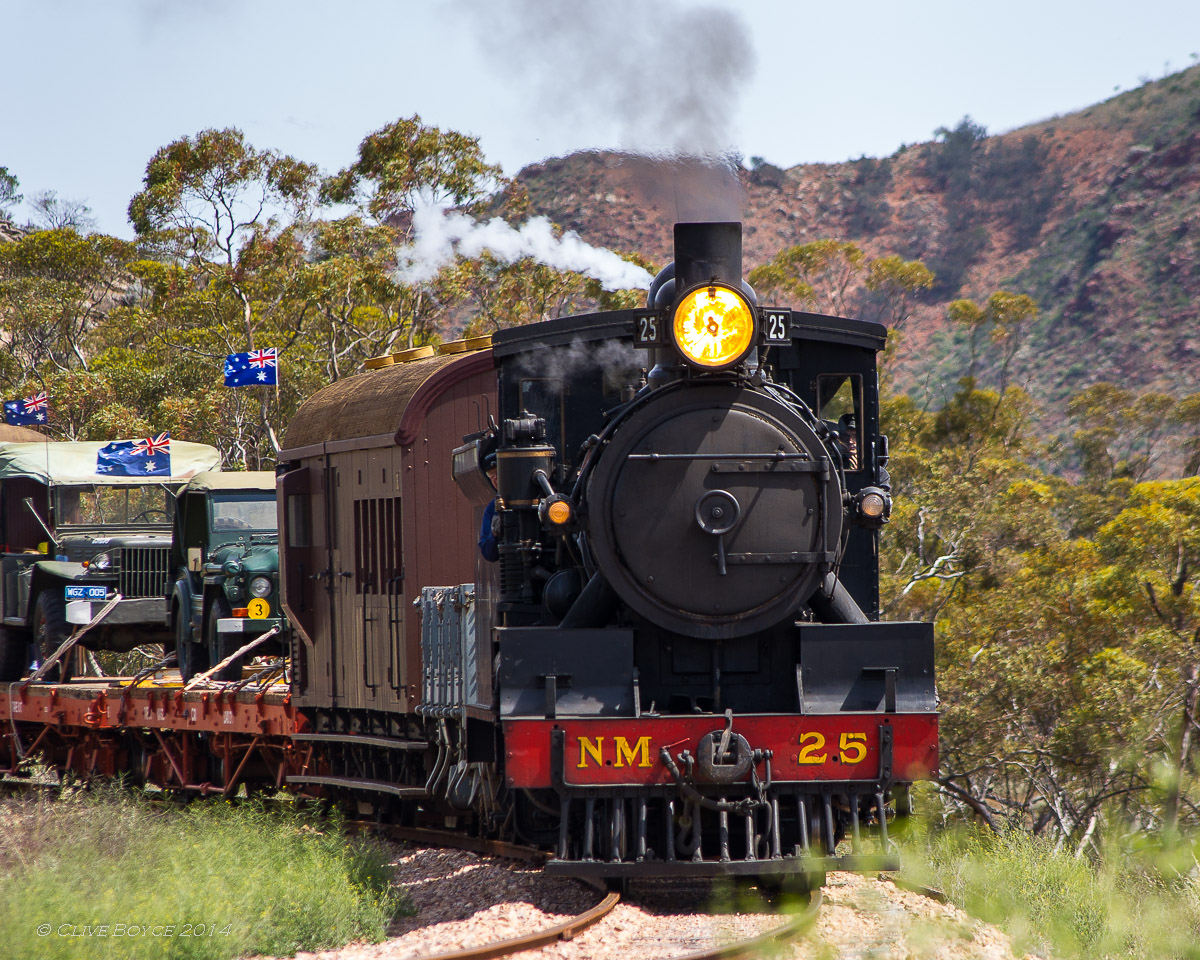
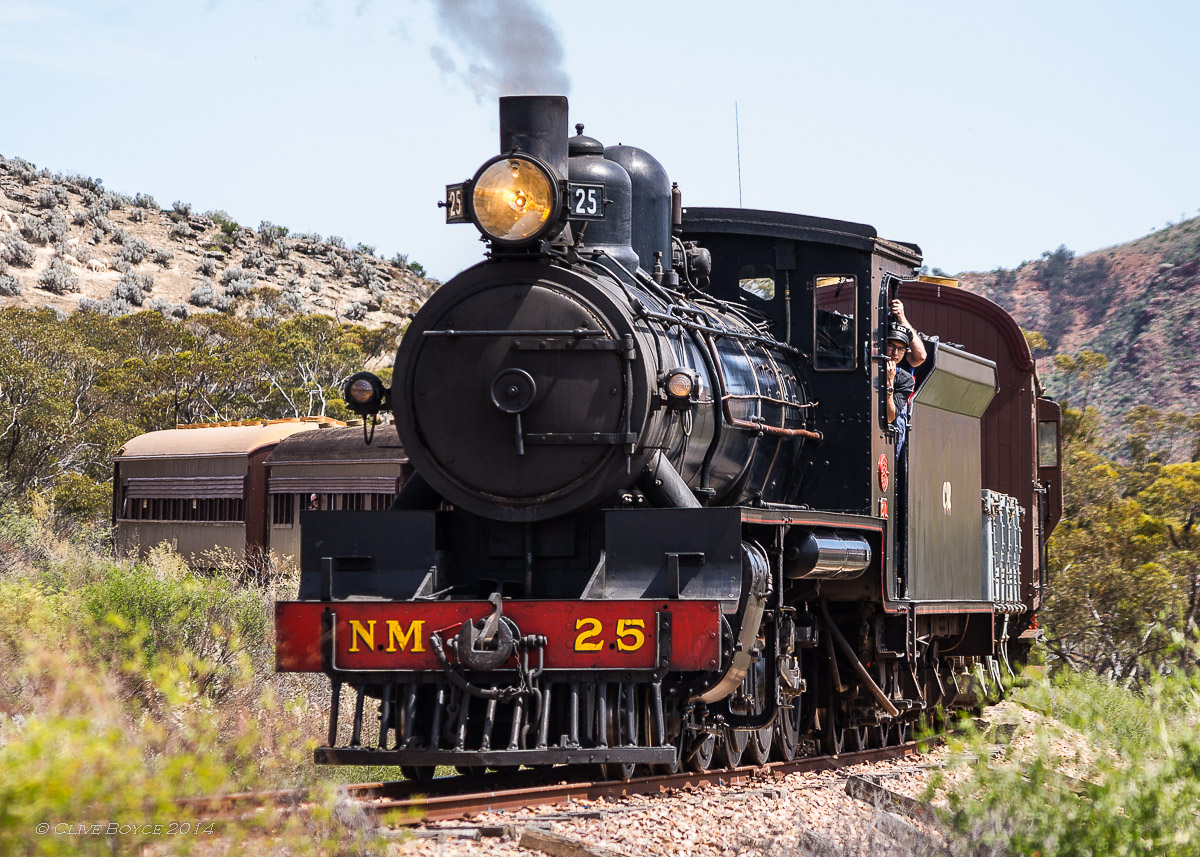
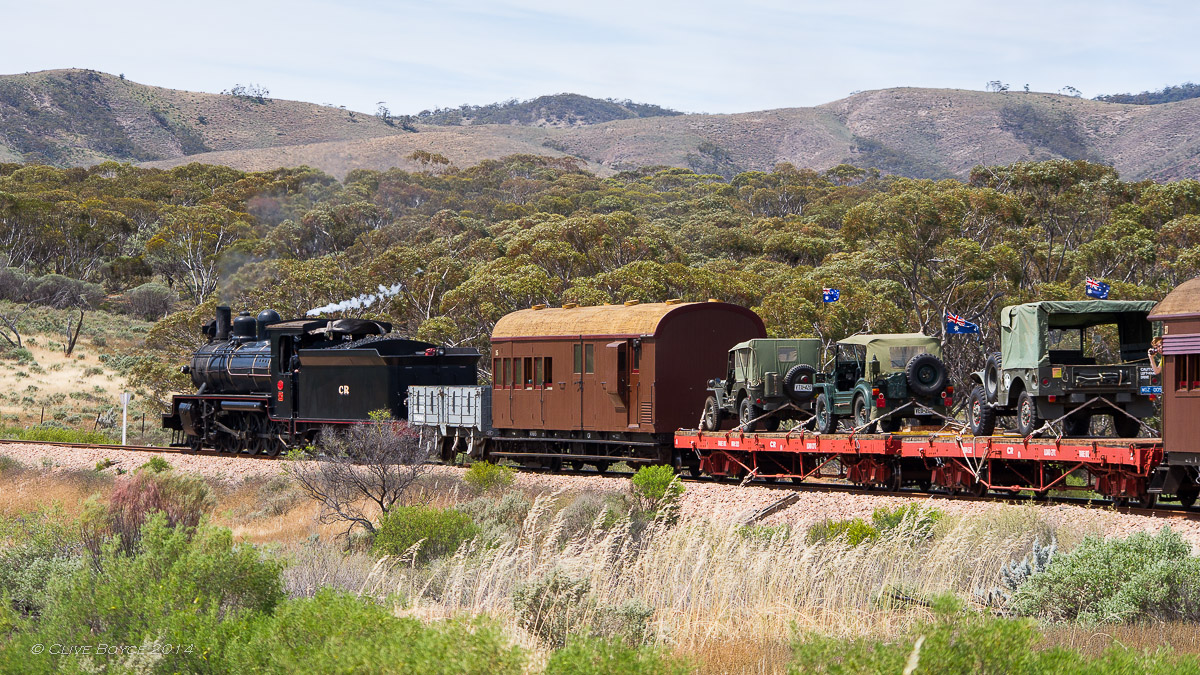
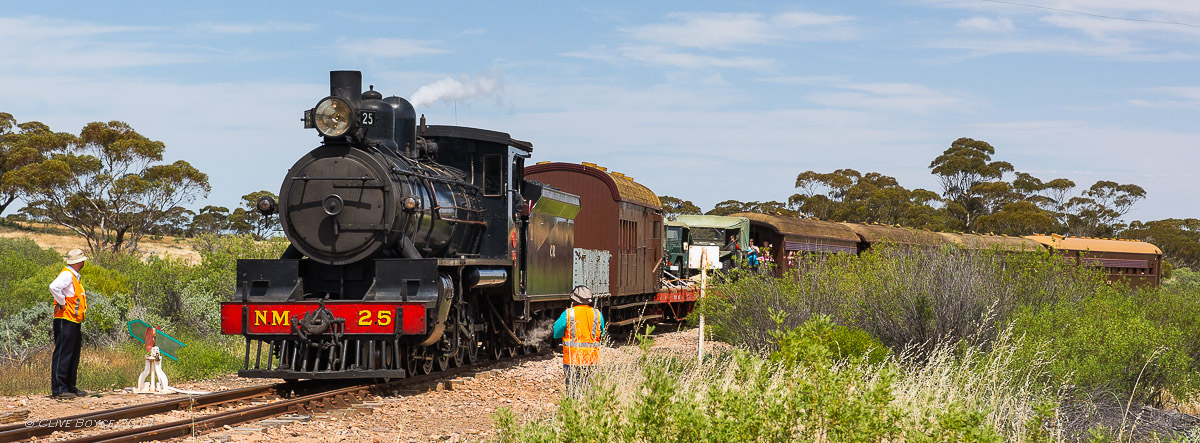
Pingback: Double Headed Steam: Pichi Richi Railway | Photo Morsels
Great story and train series. Well shot.